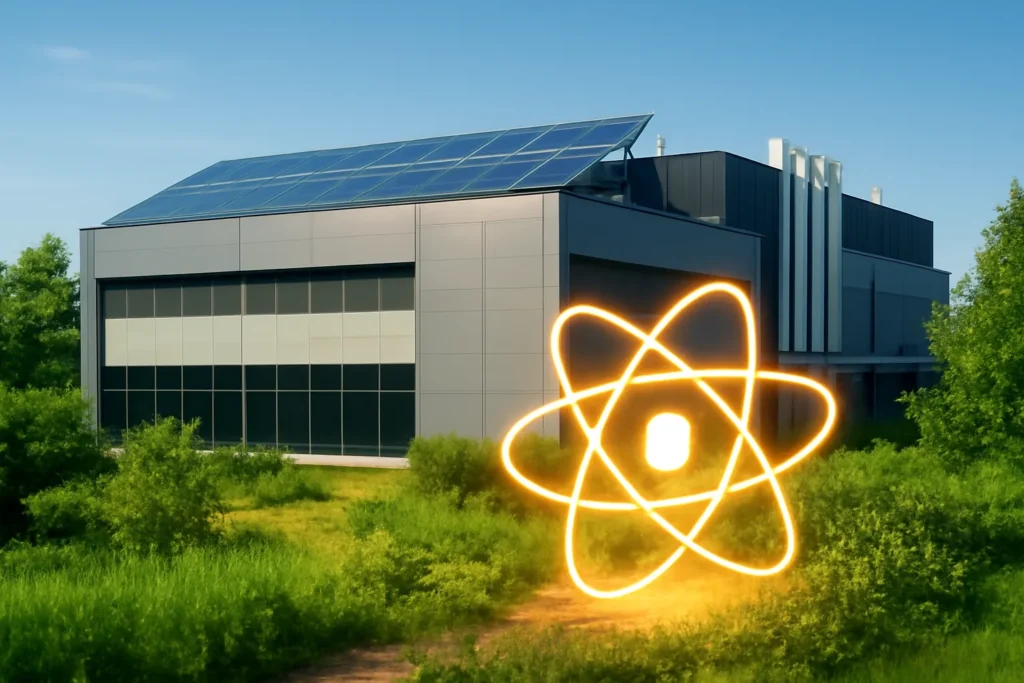Why Tech Giants Are Turning to Nuclear Power
If the idea of Silicon Valley’s biggest names backing nuclear reactors surprises you, it shouldn’t. The relentless growth of artificial intelligence and cloud computing has sparked an energy arms race—one with profound implications for the environment and the economy. In May, Elementl Power, a South Carolina-based nuclear developer founded just two years ago, announced a landmark deal with Google to fund the early development of three advanced U.S. nuclear projects. Each site is designed to generate an enormous 600 megawatts of power, enough to sustain hundreds of thousands of homes or, crucially, to fuel Google’s data centers as AI use skyrockets.
Tech companies like Google, Amazon, and Microsoft have long promised their customers a green future. Now, under the pressure of powering modern AI, their bridge to carbon-free reliability might just be nuclear energy. According to the International Energy Agency, global data centers already consume about 1-1.5% of all electricity. With the AI revolution accelerating, that figure could double within a decade. “If we really want an economy that runs on clean electrons, and if we want the internet to be powered by carbon-free energy, we cannot ignore nuclear,” argues Leah Stokes, an energy policy expert at UC Santa Barbara. Google’s bet reflects a growing consensus that wind and solar aren’t always enough—when servers need 24/7 reliability, only the power sources least beholden to the weather get a seat at the table.
Nuclear Renaissance—Hype, Hope, and Hurdles
Beyond Google’s immediate needs lies the bigger story: The U.S. is witnessing a legislative and cultural thaw on nuclear power unseen in decades. In 2023 alone, 25 states passed pro-nuclear laws, and over 200 bills supporting nuclear energy have appeared in statehouses this year, according to a tally from The Nuclear Energy Institute. Elementl Power’s flexible, technology-agnostic vision—promising to select whatever reactor design is most advanced by the time ground is broken—mirrors the moment’s frantic innovation. Small modular reactors (SMRs), advanced fission concepts, and next-generation safety systems dominate the conversation, tantalizing policymakers craving both jobs and megawatts. Yet, as Harvard physicist and climate advocate Dr. Joseph Lassiter cautions, “We don’t actually have a proven advanced reactor at commercial scale in the U.S. What we have is a lot of possibility – and urgency.”
“The tech industry’s investment in nuclear energy is a double-edged sword—promising innovation, but demanding uncompromising transparency and public trust every step of the way.”
Last year, Google inked its first direct nuclear deal with Kairos Power—a partnership hailed as a bellwether for private-sector clean energy commitments. Nonetheless, none of these advanced reactors have been deployed at scale. Elementl, for all its ambition, hasn’t built a project yet. Their plan: leverage Google’s capital for early-stage hurdles like permitting, then turn to larger infrastructure funds for full-scale construction. The strategy could accelerate timelines, but it also raises critical questions about regulatory oversight and the wisdom of relaxing long-standing safety checks, especially as political enthusiasm grows.
The Risks and Realities of a Nuclear Future
A closer look reveals that Google’s nuclear push illustrates not just tech’s appetite for power but the stubborn limitations of current energy infrastructure. America’s aging transmission lines, NIMBY opposition, and the nuclear industry’s spotty history with delays and cost overruns are formidable foes. While the promise of 10 gigawatts of new carbon-free capacity by 2035 aligns with President Biden’s climate goals, hard questions persist: Who absorbs the financial risk if a project stalls? Will communities living near these reactors have genuine input on design and siting? Are we simply shifting emissions elsewhere, or are we truly building a more equitable, just energy grid?
Contrast this with Europe’s recent nuclear setbacks: massive delays at Finland’s Olkiluoto 3 reactor, or cost spirals at the UK’s Hinkley Point C. America has its own cautionary tales, like the failed VC Summer twin-reactor project in South Carolina, which dissolved after billions in spending and left customers and taxpayers livid. Liberals rightly celebrate bold climate initiatives but must demand rigorous oversight and public engagement in every step. “This can’t be just another greenwash for Big Tech,” says environmental justice advocate Jacqui Patterson. “Right now, communities of color and working people are often left out of the conversation when risks are real, but profits flow elsewhere.” As the stakes rise, the role of regulatory agencies, public hearings, and independent safety reviews grows even more vital.
In the end, Google’s alliance with Elementl Power is both a bold (and necessary) experiment and a stark cautionary tale. Yes, advanced nuclear may offer part of the answer to big tech’s outsized demand for clean energy—but only if pursued with transparency, equity, and humility. If we give corporate giants license to build our energy future, who ensures that it’s built for all of us?

